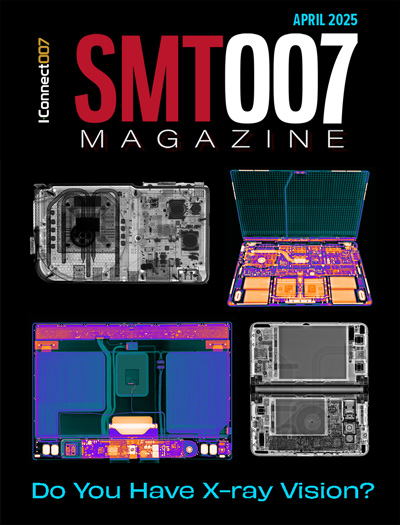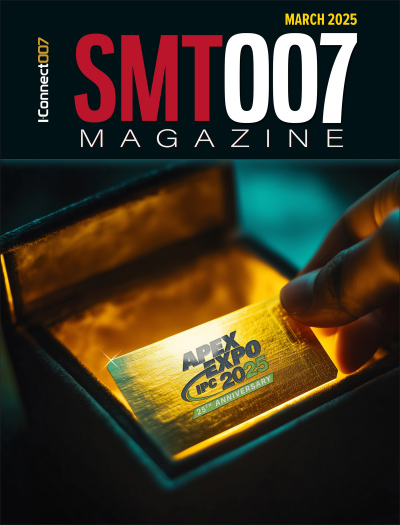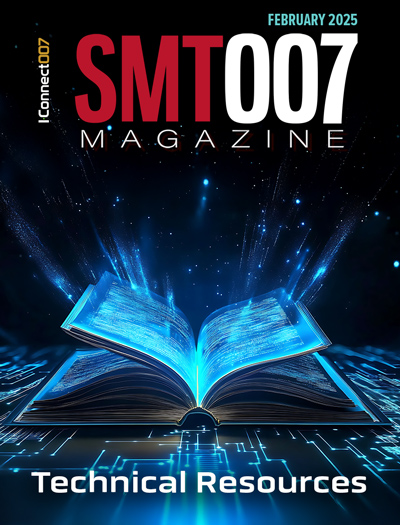-

- News
- Books
Featured Books
- smt007 Magazine
Latest Issues
Current Issue
Do You Have X-ray Vision?
Has X-ray’s time finally come in electronics manufacturing? Join us in this issue of SMT007 Magazine, where we answer this question and others to bring more efficiency to your bottom line.

IPC APEX EXPO 2025: A Preview
It’s that time again. If you’re going to Anaheim for IPC APEX EXPO 2025, we’ll see you there. In the meantime, consider this issue of SMT007 Magazine to be your golden ticket to planning the show.

Technical Resources
Key industry organizations–all with knowledge sharing as a part of their mission–share their technical repositories in this issue of SMT007 Magazine. Where can you find information critical to your work? Odds are, right here.
- Articles
- Columns
Search Console
- Links
- Media kit
||| MENU - smt007 Magazine
First 2D Material Performs as Both Topological Insulator and Superconductor
November 1, 2018 | MITEstimated reading time: 6 minutes
Jarillo-Herrero notes that this discovery that monolayer tungsten ditelluride can be tuned into a superconductor using standard semiconductor nanofabrication and electric field effect techniques was simultaneously realized by a competing group of collaborators, including Professor David Cobden at the University of Washington and Associate Professor Joshua Folk at the University of British Columbia. (Their article — “Gate-induced superconductivity in a monolayer topological insulator” — is being published online at the same time in Science First Release.)
“It was done independently in both groups, but we both made the same discovery,” Jarillo-Herrero says. “It’s the best thing that can happen that your big discovery immediately gets reproduced. It gives extra confidence to the community that this is something that’s very real.”
Jarillo-Herrero was elected as a fellow of the American Physical Society earlier this year based on his seminal contributions to quantum electronic transport and optoelectronics in two-dimensional materials and devices.
Step Toward Quantum Computing
A particular area where this new capability may be useful is the realization of Majorana modes at the interface of topologically insulating and superconducting materials. First predicted by physicists in 1937, Majorana fermions can be thought of as electrons split into two parts, each of which behaves as an independent particle. These fermions have yet to be found as elementary particles in nature but can emerge in certain superconducting materials near absolute zero temperature.
“It is interesting by itself from a fundamental physics point of view, and in addition, it has prospects to be of interest for topological quantum computing, which is a special type of quantum computing,” Jarillo-Herrero says.
The uniqueness of Majorana modes lies in their exotic behavior when one swaps their positions, an operation that physicists call “braiding” because the time dependent traces of these swapping particles look like a braid. The braiding operations can’t change the quantum states of regular particles like electrons or photons, however braiding Majorana particles changes their quantum state completely. This unusual property, dubbed “non-Abelian statistics,” is the key to realizing topological quantum computers. A magnetic gap is also needed for pinning the Majorana mode at a location.
“This work is quite beautiful,” says Jason Alicea, professor of theoretical physics at Caltech, who was not involved in this research. “The basic ingredients necessary for engineering Majorana modes — superconductivity and gapping of edge states by magnetism — have now been separately demonstrated in WTe2.”
“Moreover, the observation of intrinsic superconductivity by gating is potentially a major boon for advanced applications of Majorana modes, e.g., braiding to demonstrate non-Abelian statistics. To this end, one can envision designing complex, dynamically tunable networks of superconducting quantum-spin-Hall edge states by electrostatic means.” Alicea says. “The possibilities are very exciting.”
The work was supported by the Gordon and Betty Moore Foundation and also was partly supported by the U.S. Department of Energy Basic Energy Sciences Office, the National Science Foundation, and the Elemental Strategy Initiative in Japan.
Page 2 of 2Suggested Items
DuPont Announces Additional Directors for the Planned Independent Electronics Company
04/18/2025 | DuPontDuPont announced that Karin De Bondt and Anne Noonan will become members of the future board of directors for the independent Electronics public company that will be created following its intended spin-off from DuPont, which is targeted for November 1, 2025.
Indium Experts to Present on Power Electronics at PCIM Europe 2025
04/17/2025 | Indium CorporationAs one of the leading materials providers to the power electronics assembly and e-Mobility industries, Indium Corporation experts will share their technical insight and knowledge on a variety of industry-related topics throughout PCIM Europe, May 6-8, in Nuremberg, Germany.
YINCAE to Showcase Cutting-Edge Solutions at SEMICON Southeast Asia 2025
04/16/2025 | YINCAEYINCAE Advanced Materials, a leading provider of innovative solutions for the semiconductor and microelectronics industries, is proud to announce its participation in SEMICON Southeast Asia 2025.
Improve Your Process Reliability: Axxon-Mycronic and HumiSeal to Host Conformal Coating Workshop in Guadalajara
04/15/2025 | Axxon-MycronicAxxon-Mycronic, a leading, global supplier of innovative and production-ready, dispensing and conformal coating systems, in collaboration with HumiSeal, a global expert in protective coating materials, is excited to announce a Conformal Coating Workshop taking place on May 8, 2025 in Guadalajara, Mexico.
Real Time with... IPC APEX EXPO 2025: Exploring LCP Materials with Matrix Electronics
04/15/2025 | Real Time with...IPC APEX EXPONolan Johnson introduces Robert Berg from Matrix Electronics, highlighting the company's focus on high-speed, low-loss flexible materials, especially LCP materials. LCP (liquid crystal polymer) is a thermal plastic with unique properties that make it ideal for advanced PCB applications. Despite processing challenges, its stability and FDA approval for medical use drive interest in aerospace and medical markets.


